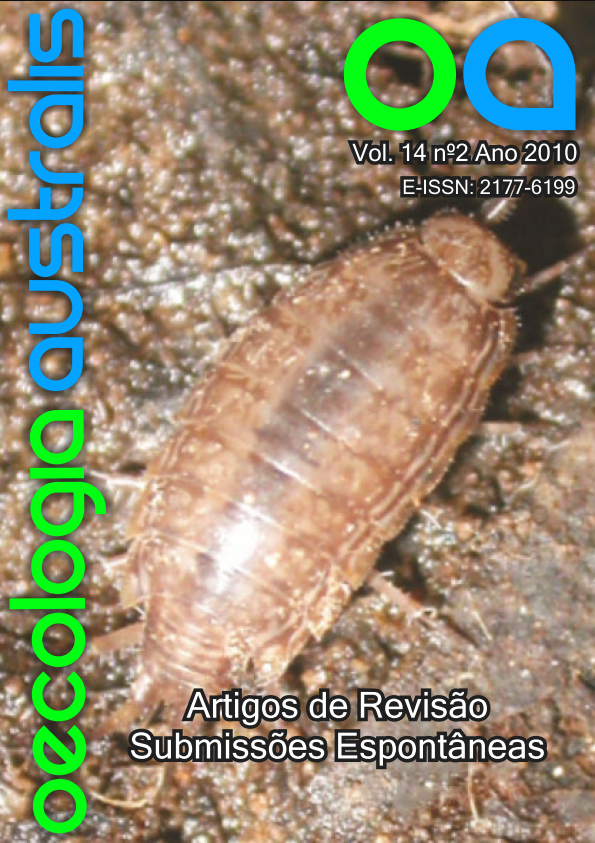FEEDING BIOLOGY AND ECOLOGY OF ELASMOBRANCHS (CHONDRICHTHYES: ELASMOBRANCHII): A REVIEW OF METHODS AND THE STATE OF THE ART IN BRAZIL.
Keywords:
Literature revision, diet, feeding behavior, cartilaginous fishes.Abstract
Information on feeding biology and ecology of elasmobranchs can be accessed in summary form in the worldwide literature, however revisionary studies and inventories on the research conducted in Brazil are rare. Such revisionary publications are useful because they facilitate the design of research and comparison of results. The present study aims to: (1) summarize the methodologies and the main knowledge already established in the worldwide literature on feeding biology and ecology of elasmobranchs; (2) provide an inventory of the works performed in Brazil in this field of knowledge. Searches were done on abstracting and indexing services and also included gray literature. Colleagues were consulted and the cited references on the acquired studies were revised as well. Only works published in scientific journals were considered in the analysis of the Brazilian researches. In addition, information on the conservation status of population and species richness were used in recommendations for future research. A total of 94 Brazilian studies were identified. The amount of works has grown plenty over the last decade following a worldwide trend, but most are available as gray literature. Only 26% of the total richness of the elasmobranch registered in Brazil has had their feeding biology studied. Thus, researchers often only aim to fill the knowledge gaps, showing no concern about management actions. The results established in the Brazilian research on aspects of the species diet are in accordance with the patterns described worldwide, being the only exception related to the Potamotrygonidae family of stingrays. The literature on feeding behavior, food consumption, and mechanics of prey capture and also on relationship between diet and environment almost does not exist in Brazil, and indeed is quite limited in the world too. Therefore, there are large gaps in knowledge on feeding biology and ecology of the species on the Brazilian coast, and many of these are already suffering strong population declines. In conclusion, researches in this field of knowledge are highly recommended and their results should be published in reputable scientific journals together with management proposals for the studied populations.


